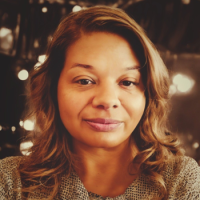Welcome to the AES Blog
Evaluators as brokers of tech: How to vet and integrate tools without 'drinking the Kool-Aid'
Why evaluators are being pulled into the tech conversation
- Are we technically ready?
- Is this culturally relevant?
- What are the ethical risks?
- Can we sustain it?
Shiny tool syndrome: a cautionary tale
- Who trained the model?
- Does it reflect the population we serve?
- Can we audit how it makes decisions?
- Do we even have the right data volume or quality to justify this?
A poor tech decision isn't merely a budget hit. It can skew findings, disrupt relationships, and delay actions.
What does a tech broker actually do?
You interpret community needs, organizational values, and cultural dynamics. For instance, you ensure that a mobile survey platform accommodates local languages and that the technology serves those priorities rather than vice versa.
You ask the tough questions:
- Is this accessible to users with disabilities?
- Will it work offline in rural or low-bandwidth settings?
- Can it be used with minimal training?
You resist being dazzled by features and demand proof. That means pushing vendors to demonstrate real-world outcomes like improved decision-making, not just slick interfaces. Sustainability Assessor You think beyond the pilot.
- Can the tool be maintained or updated?
- Who will train new staff?
- Is there funding or internal capacity to support it long-term?
You advocate for informed consent, equitable data ownership, and ensure community members have a voice in how tools are used and how results are shared.
A tool vetting framework for evaluators
Whether it's AI-powered software, a mobile survey platform, or a digital storytelling tool, every piece of technology should earn its place in your evaluation toolkit. This straightforward framework can assist you in asking the right questions before implementation.
| DIMENSION | KEY QUESTIONS |
| Purpose Fit | Does this solve a real problem? Is there a meaningful gap this tool addresses? |
| Context Fit | Does it fit our cultural, logistical, and digital reality? |
| User Inclusion | Is it accessible and inclusive for all stakeholders, including those with disabilities or low-tech access? |
| Capacity Match | Can our team realistically use, train on, and maintain this tool over time? |
| Evidence of Value | Has this worked in similar contexts? Are the outcomes measurable and relevant? |
| Ethical Soundness | Who owns the data? What are the risks of misuse, bias, or harm? |
Pro tip: Asking even two or three of these questions early can save months of backtracking and rebuilding. I learned this while implementing electronic health records in the early 2000s.
We don't need to be technologists. But we do need to be intentional
The role of the evaluator is evolving, but that doesn't mean we need to become coders or UX designers. What we need is discernment: the ability to choose tools with intention, push back against trends that are unproven, and speak up when technology threatens to undermine trust, inclusion, or rigor.
Being a tech broker isn't merely about the tool itself; it's about the thoughtfulness behind how and why we use it.
Final thoughts
As we lean into innovation, let's stay grounded in what matters most: evaluation that reflects the communities we serve, data that drives meaningful change, and tools that add clarity not confusion.
We don't need to drink the Kool-Aid—just learn to read the label before passing it around. Asking hard questions isn't resistance—it's responsibility. That's how we protect the integrity of our work and ensure technology supports, rather than steers, our values.
Disclaimer: This article was authored by Dr. Val Malika Reagon. The ideas presented were developed and structured in collaboration with ChatGPT, an AI tool by OpenAI, which supported content organization and refinement.
-------------------------------
ABOUT THE AUTHOR
Dr Val Malika Reagon is a former CDC health scientist and epidemiologist and the Founder of Smith Hill Global Consulting. With 20+ years spanning hospital administration and global health systems, she now focuses on AI integration and ethical tech use in evaluation. Her work has shaped outcomes across the U.S. and PEPFAR countries.
We acknowledge the Australian Aboriginal and Torres Strait Islander peoples of this nation. We acknowledge the Traditional Custodians of the lands in which we conduct our business. We pay our respects to ancestors and Elders, past and present. We are committed to honouring Australian Aboriginal and Torres Strait Islander peoples’ unique cultural and spiritual relationships to the land, waters and seas and their rich contribution to society.


